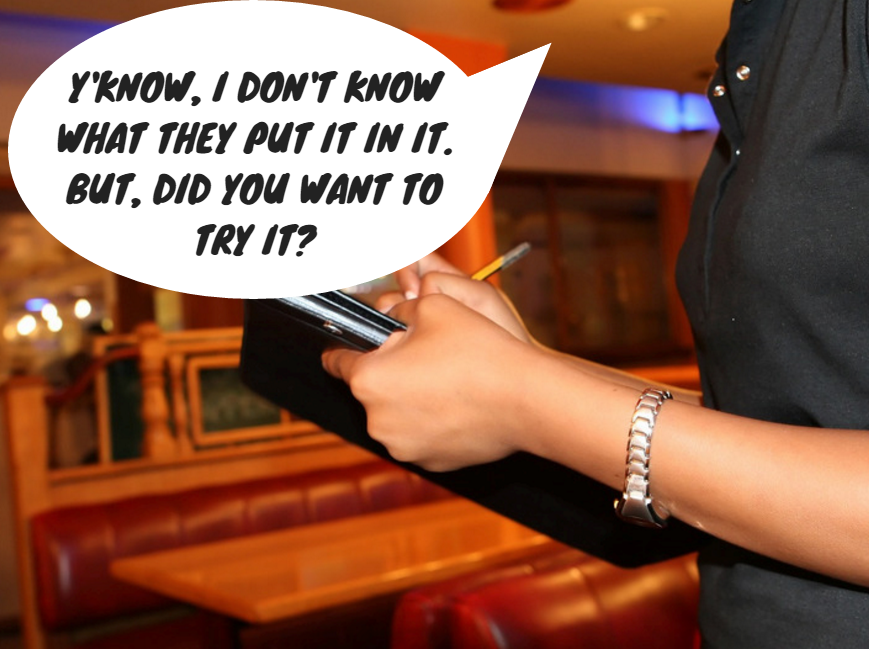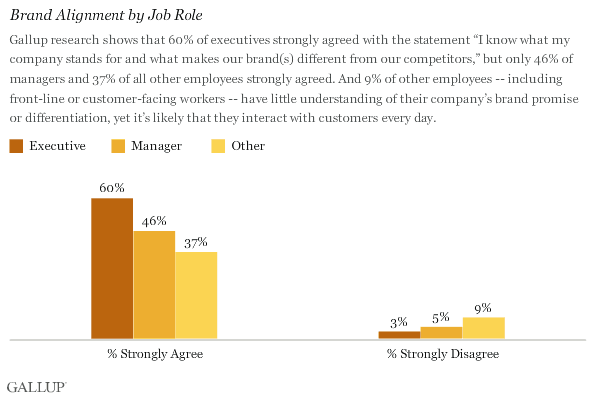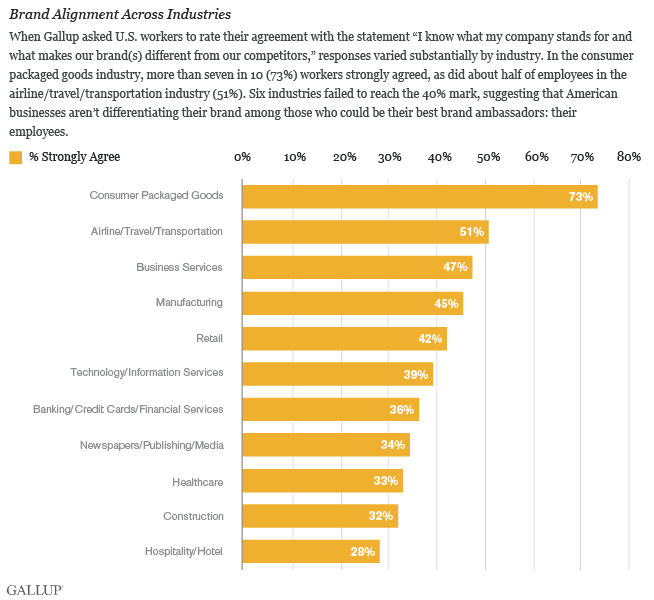After eavesdropping recently on a conversation between two people in a restaurant, I realized I’ve been remiss in talking more about “front of house” tactics as it relates to converting more shoppers into customers. In a restaurant or bar, the front of house team includes every employee you see during your visit — the host or hostess, the server, and even the busboy.
If you’ve ever asked a server if a certain menu item is good and received a response like, “Oh, I’ve never had it,” or, “Sorry, I don’t eat shellfish,” then you understand the frustration of not being able to receive proper guidance. And if you’ve ever asked what comes in a specific dish, only to watch a finger point to the menu or, worse, being told, “Ooh, I don’t know,” you know how it feels to be connected with someone who doesn’t understand the product line or policies.

Not understanding products or store policies frustrates shoppers.
Customer service agents. Those who answer phones, emails, and online chats must understand both the product offerings and online store’s policies in order to help close sales and build loyalty. Last week I decided to put some of those working for large-scale corporations to the test.
In a nutshell, many questions couldn’t be answered, and I received many promises of email follow-ups. One service agent, when asked 13 general questions about the features of a SaaS product, could only answer five of them. The biggest trend via online chat and email was the return of stock replies with links to a web page that required a great deal of reading to reach the answer that pertained to me.
There are customers who want to do their own homework, and there are those who just want answers to specific questions. It is our job to accommodate both types of consumers, even if it means building an internal knowledge base that is constantly being updated with all types of keywords and phrases.
Time equals money. The amount of time it takes customer service staff affects operating costs, and the time it takes for shoppers to get answers affects sales. Ignore the need to provide quick, easy-to-understand responses and the chance of capturing a sale is greatly reduced.
For example, it’s reported that nearly 70 percent of people who visit a restaurant aren’t sure what they want to order. They will rely on menu pictures and descriptions, along with server recommendations, to make a decision. A scant few will take the time to look up menu items on their smartphones. And while they may not up and leave due to lack of information, more often than not returning won’t be an act of free will.
Here are seven main reasons customer service fails to convert people who would otherwise likely buy.
7 Reasons Customer Service Agents Lose Sales
No “first call resolution.” Shoppers that can get questions answered or issues resolved during the first interaction are much more likely to buy now or again.
A lack of respect. Whether it be in general or for the customer’s time, people need to feel valued, even if they haven’t yet made a single purchase.
Lack of understanding what the brand stands for. Gallup studies have shown that by the time information trickles down to regular employees, knowledge about what the brand stands for is nearly lost. Every employee, especially those handling requests, need to understand the brand and company goals in order to provide great service.

Not understanding what the company stands for greatly affects the ability to convert.
—

Retail brand alignment in relation to how many employees understand what the company stands for falls just above 40 percent.
Lack of knowledge about product lines. Agents need the right tools to answer questions. In many cases, simply reading what’s listed on the product page isn’t sufficient.
Lack of understanding store policies. Responses about returns and exchanges, loyalty programs and price matches should be made in an instant.
Lack of tools to quickly lookup key information. Stock replies can help, but agents should be prepared to answer beyond canned responses.
Inability to make a decision. Escalating calls takes time and is frustrating for the shopper. The need for first-call resolutions means giving agents more power to handle issues efficiently. This includes allowing for the delivery of “save the sale” coupons or free shipping discounts, and honoring an request that falls within an additional time frame.
Let’s deliver more value to consumers in the form of customer service. It’s great when a restaurant manager stops by the table to apologize for that overcooked steak, but the server shouldn’t have to wait on the manager before being able to take it away to order another. Oh, and be sure to let your staff “try the food,” because no one sells a product better than someone who knows exactly how it works.



